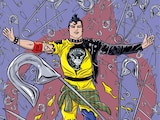Amanda Waller is not angry. She is not cold. She is not a hero, or a villain, or even a bureaucrat. Amanda Waller is tired. Tired of a system where regular people must suffer daily as a matter of course. Tired of being powerless to protect her family. Tired of a world of supermen who exist only to keep the world from getting worse and never any better. But when Amanda Waller gets tired, she does not rest. Nor does she care what enemies she makes or what you think about her. Amanda Waller does absolutely everything necessary to make a change.
This determination of will alone has made Waller a key figure in the world of DC spycraft and black ops, a rival in intelligence and global activity to Batman himself, and one of the most powerful women in the world. Amanda Waller’s character and intention are often misunderstood, perhaps because she so rarely feels the need to explain herself. But it’s those very complexities which make “The Wall” one of the most interesting characters in the DC Universe. Let’s discuss a few of the reasons that Amanda Waller can stand scrutiny against every character in comics there is, including your fave.
(Unless, of course, your fave happens to be Amanda Waller herself. In which case, welcome.)
Beating the Bat
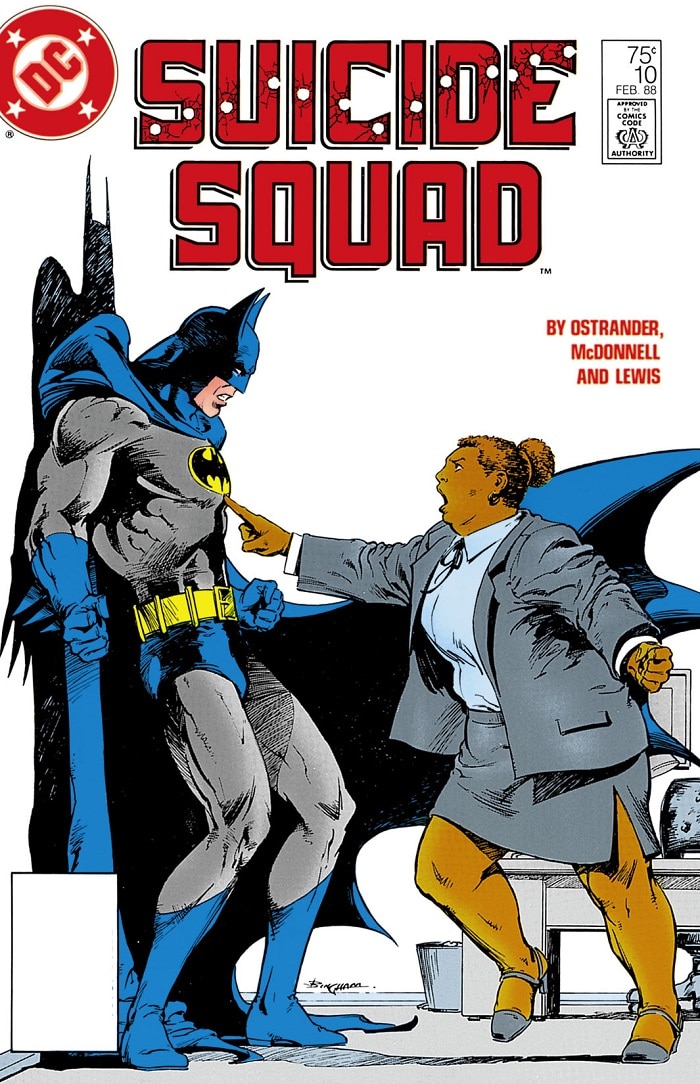
My own first encounter with Amanda Waller was through the same medium where I met many of my now favorite characters: the Dwayne McDuffie-produced 2004 animated series, Justice League Unlimited. In the season 1 episode “Ultimatum,” the Justice League catches wind of Project Cadmus, a government operation to create a team of heroes they can control themselves, and the project’s director was unlike any character I’d seen before in the DC Animated Universe. Nearly as wide as she was tall, Amanda Waller was a far cry from the typical bombshell vixens drawn by Bruce Timm who hung off the arm of a crazed villain or went moony-eyed over Bruce Wayne. If she ever smiled, it was because she knew something that you didn’t. And not even the Justice League, least of all Batman, could get a rise out of her.
On the night the League first confronted Waller about her “Ultimatum” project, she was unbowed and unapologetic. The world needed protection from the Justice League, and Amanda Waller was not afraid to be the one to stand up to the gods who professed to be her saviors. Standing only up to Batman’s chest, the two factions depart their first stalemate as she disarms him with a smirk and an offhand remark:
“And if I were you, I wouldn’t probe the situation too closely…rich boy.”
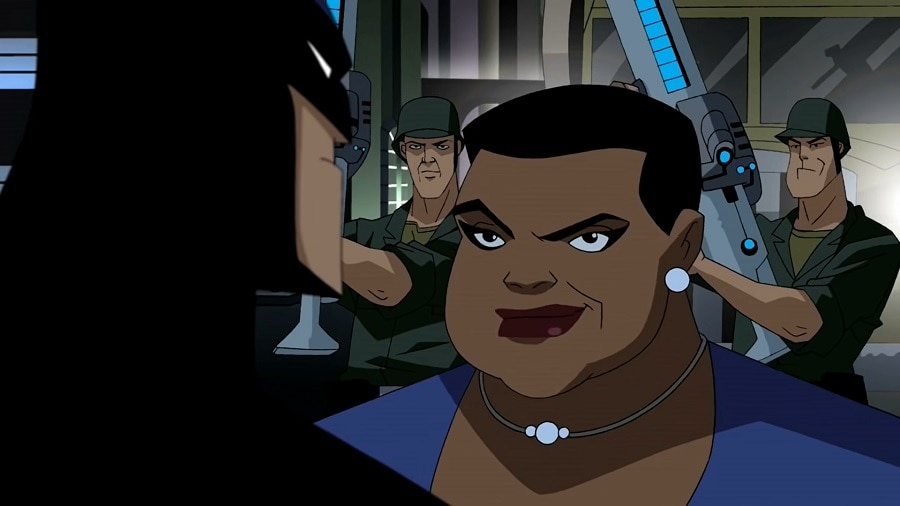
It was one of the few times Batman was taken completely by surprise. As Joker, Two-Face and Batman’s classic rogues gallery faded into the background, Amanda Waller would become Batman’s own rival for the rest of the series in a way no other antagonist could compare. Because while they had opposing methods, they were both ultimately fighting for the same goal. Which is why in the episode “Epilogue,” once intended as a series finale to the entire DC Animated Universe, it was Waller who had the last laugh. In the conspiracy behind the birth of Terry McGinnis, the Batman Beyond, she had created her own answer to Batman after all.
Amanda Waller’s rivalry with Batman didn’t begin on screen. It goes back to the original Suicide Squad series by John Ostrander and Kim Yale, where Waller’s Task Force X bears little difference, at least in their mission statement, to Batman’s own Outsiders. It transitioned to live action in the 2016 Suicide Squad, in a faceoff between Viola Davis and Ben Affleck which still stands as the most potent scene in the entire film. And it finally culminated, of all places, in the 2017 video game Batman: The Enemy Within, where Waller finally showed Batman her cards: with her intelligence network, she’s always known exactly how the playboy Bruce Wayne spends his nights.
If you ask Batman, Task Force X only continues to exist because he hasn’t made it a priority to shut Waller down. If you ask Amanda Waller, Batman only continues to operate because she finds him more useful. After all, who better to keep Belle Reve supplied with a steady supply of agents? As you come to understand who Amanda Waller is, you may realize that they just might both be right.
The Shape of Power
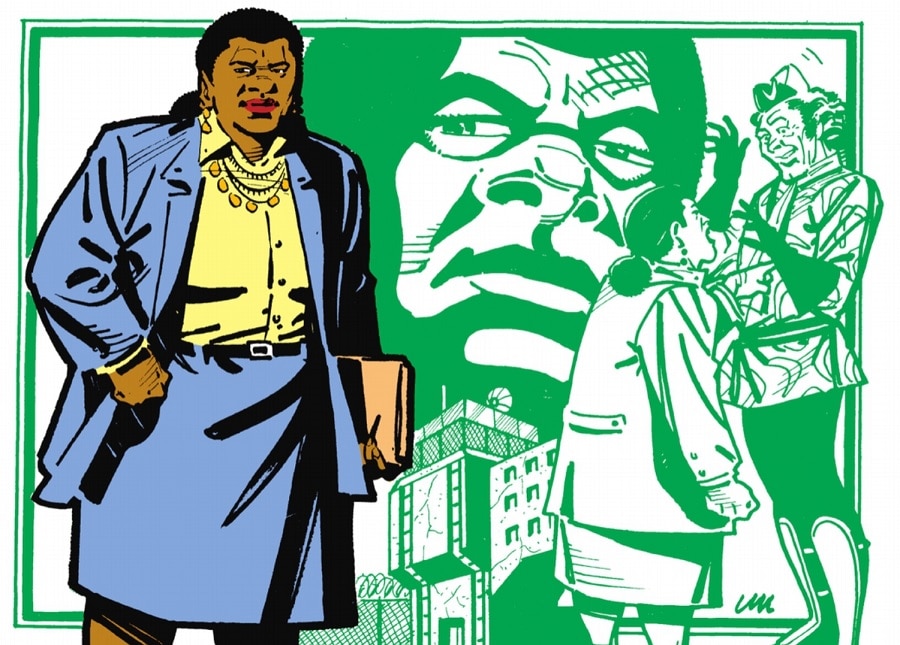
To Suicide Squad creators John Ostrander and Kim Yale, it wasn’t just important that the team leader be a Black woman—a demographic so rarely seen in positions of power in media, both then and now—but that she should be a woman who didn’t look anything like your typical female comic book character. In the late 80s to early 90s, as the women of comic books across the industry shrunk in waists, ballooned in busts, and contorted into impossible sexualized poses, the Wall would stand unmoved.
Amanda Waller was an all-too-rare example in comics for women that you didn’t have to look like an athlete who moonlighted somehow as a lingerie model to be a figure of power, importance and respect. The brokers of power and the hubs of intelligence in the DC Universe could look like anyone and could come from anywhere. It’s no coincidence that the wheelchair-using Barbara Gordon made her debut in Suicide Squad as an intelligence operative, working for Waller herself. Waller and Oracle were two opening salvos in a war still being waged against the limiting role that women of all shapes and all backgrounds can play in superhero stories.
Amanda Waller doesn’t have the body of Harley Quinn, or Poison Ivy, or Killer Frost. But she’s been the one to keep them all in line.
Waller’s Greatest Secret
Amanda Waller refuses to play the games on any terms but her own. She’s literally the woman with her finger on the button, manipulating the world’s most notorious villains into assets with a promise of freedom and a threat of execution. They call her “The Wall” not just for her physical proportions: it’s the impression she gives that nothing in this world, no cataclysmic threat or emotional appeal, can knock her over. Which is why it’s so important to Waller that no one ever learn the truth about her: the reason she does it all, the reason she wakes up every morning and goes to war with the world’s most beloved heroes and locks horns with the government’s most powerful figures in rival organizations, is because she truly, deeply cares.
Before she was one of the most feared women in the world, before Batman brooded over how to vault over The Wall, Amanda Waller was a wife and mother. Living in the Chicago housing projects, Amanda Blake married Joseph Waller when she was just eighteen years old and together, they had several kids. But every day brought new tragedy and new challenges to the Wallers, one example of so many voiceless American families in our own cities. Joseph Junior, the recipient of a college basketball scholarship, was killed in a mugging before his career could even start. Coretta, their daughter, was assaulted and murdered by a Chicago-based killer who called himself the Candyman. All too believably, the authorities could not be bothered to help this poor Black family in any way that mattered. Joseph Waller himself would die in pursuit of the monster who slayed his girl.
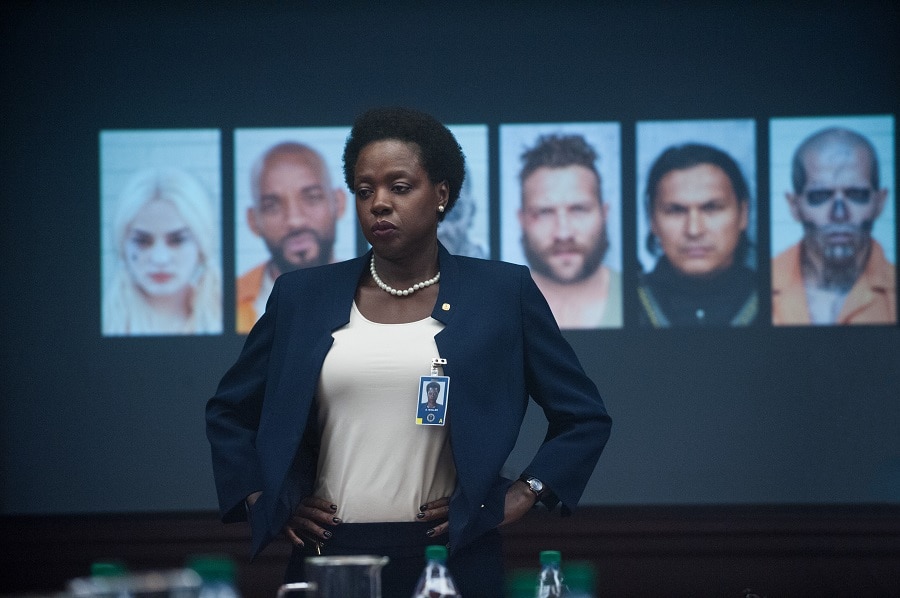
Now, it was up to Amanda alone to protect the family she had left. Tired but unbowed, she worked to put all of the children she had left through college. Only then did she follow her children to college herself, earning a degree in political science. So would begin a political career which, through sheer determination, would take her all the way to the head of the table in many of the country’s most secret rooms.
Like all politicians, Waller’s survival has depended on compromise. When she proposed Task Force X, it was supposed to be a team of heroes, who worked alongside the government of their own will. The logistics didn’t work out. They didn’t have the roster to make it work. What they did have was a prison full of super-villains. Waller’s project was given what heroes she could find, like Bronze Tiger, Vixen and later Katana, but for the rest of her team, she’d have to compromise herself further.
At first, the motivation was purely positive. Work for the Squad, get time off your sentence. But you can’t trust a villain in the field to behave, so they were outfitted with explosive bracelets. Eventually, that became an explosive agent injected into their necks. And through it all, Amanda Waller took no pleasure. In Suicide Squad #62, Sarge Steel observes that a recent death on the team seems to have really gotten to the seemingly unflappable Amanda. Weary and vulnerable for just one panel, Waller responds:
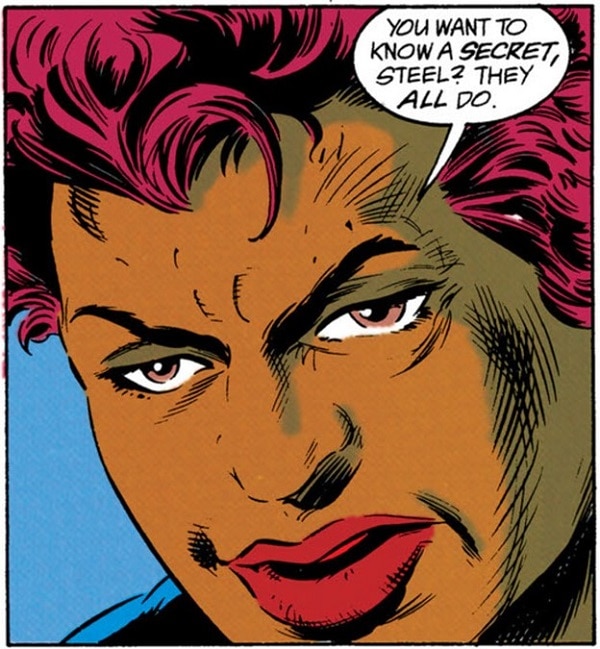
And maybe that’s the reason Batman and Amanda Waller stand as such equal and opposite counterparts. They look nothing alike, and operate in completely different ways. But both have given everything they have to avenge the people they love and do whatever it takes to ensure that the tragedies which befell them never go unanswered for anyone else.
Tragically, it’s a single-mindedness which has often driven away the people they care about most or led to further tragedy within their orbit. Waller’s younger cousin, Flo Crawley, was killed in the line of duty following her older relative and personal hero’s dream. Her relationship with her newest daughter, Leota Adebayo, is even more complicated. Because Waller’s saddest truth is that while she’s done it all for her kids, the person she had to become in order to pursue that dream of a more just world is one which has driven away the family she has left. All that remains is the mission.
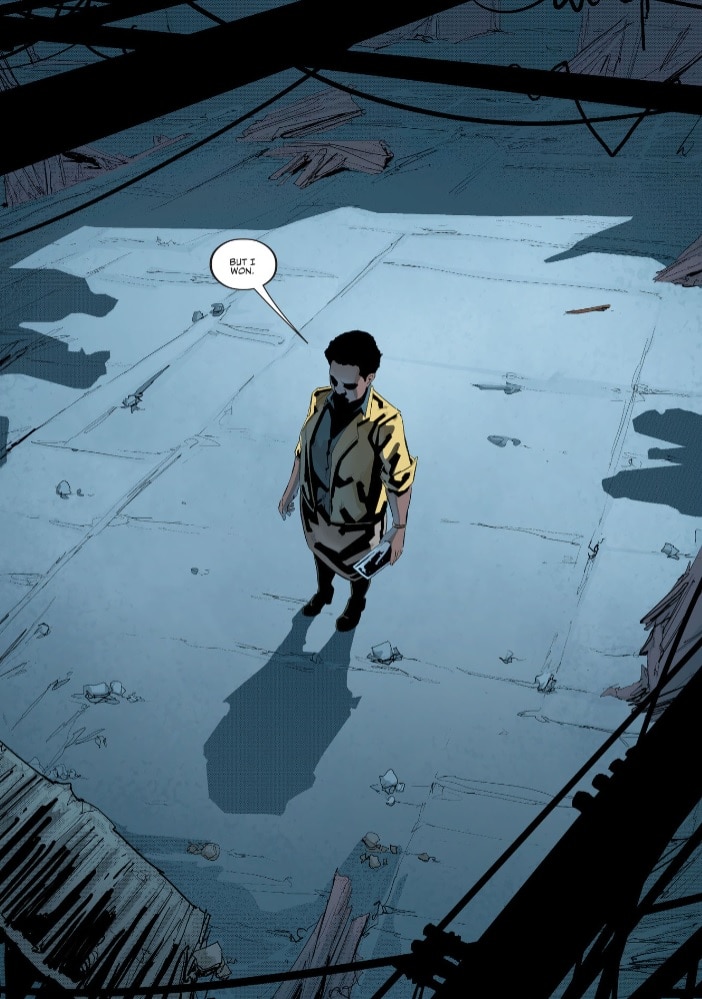
So she better be damn good at it.
Get caught up on Suicide Squad comics right now on DC UNIVERSE INFINITE!
Alex Jaffe is the author of our monthly "Ask the Question" column and writes about TV, movies, comics and superhero history for DCComics.com. Follow him on Twitter at @AlexJaffe and find him in the DC Community as HubCityQuestion.
















